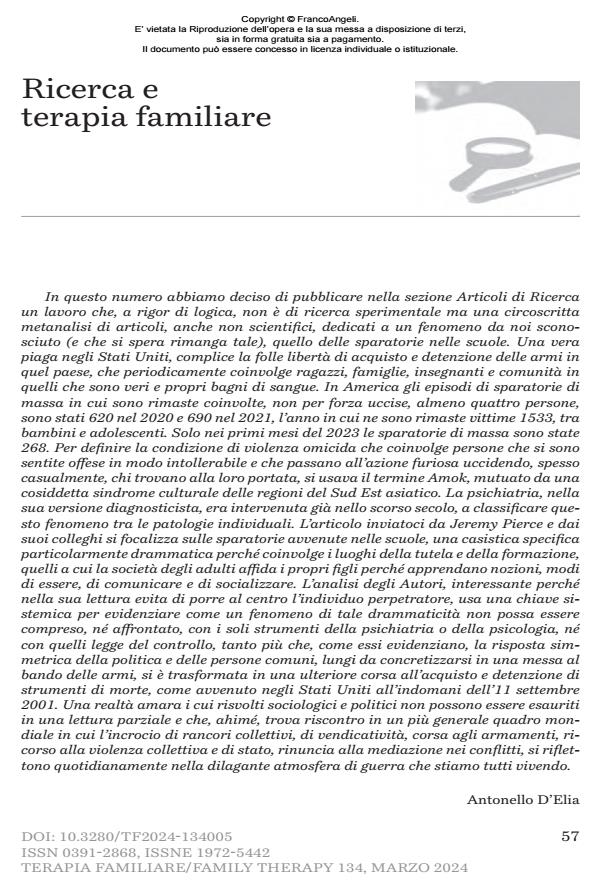School Shootings in the United States: Systemic Considerations
Journal title TERAPIA FAMILIARE
Author/s Jeremy Pierce, Zachary Trevino, Kate Wagner, Monica Osterbauer
Publishing Year 2024 Issue 2024/134
Language Italian Pages 18 P. 57-74 File size 740 KB
DOI 10.3280/TF2024-134005
DOI is like a bar code for intellectual property: to have more infomation
click here
Below, you can see the article first page
If you want to buy this article in PDF format, you can do it, following the instructions to buy download credits

FrancoAngeli is member of Publishers International Linking Association, Inc (PILA), a not-for-profit association which run the CrossRef service enabling links to and from online scholarly content.
The authors seek to provide a systemic and ecological understanding of the phenomenon of school shootings in the United States. An overview of the systemic impacts of school shootings is provided along with a brief application of general systems and ecological theories culminating in a call to action for all systemic therapists to collaborate in confronting these tragedies.
Keywords: school shootings, general systems theory, cybernetics, ecological theory, mass media, biopsychosocial impacts.
Jeremy Pierce, Zachary Trevino, Kate Wagner, Monica Osterbauer, Le sparatorie nelle scuole negli Stati Uniti. Considerazioni sistemiche in "TERAPIA FAMILIARE" 134/2024, pp 57-74, DOI: 10.3280/TF2024-134005